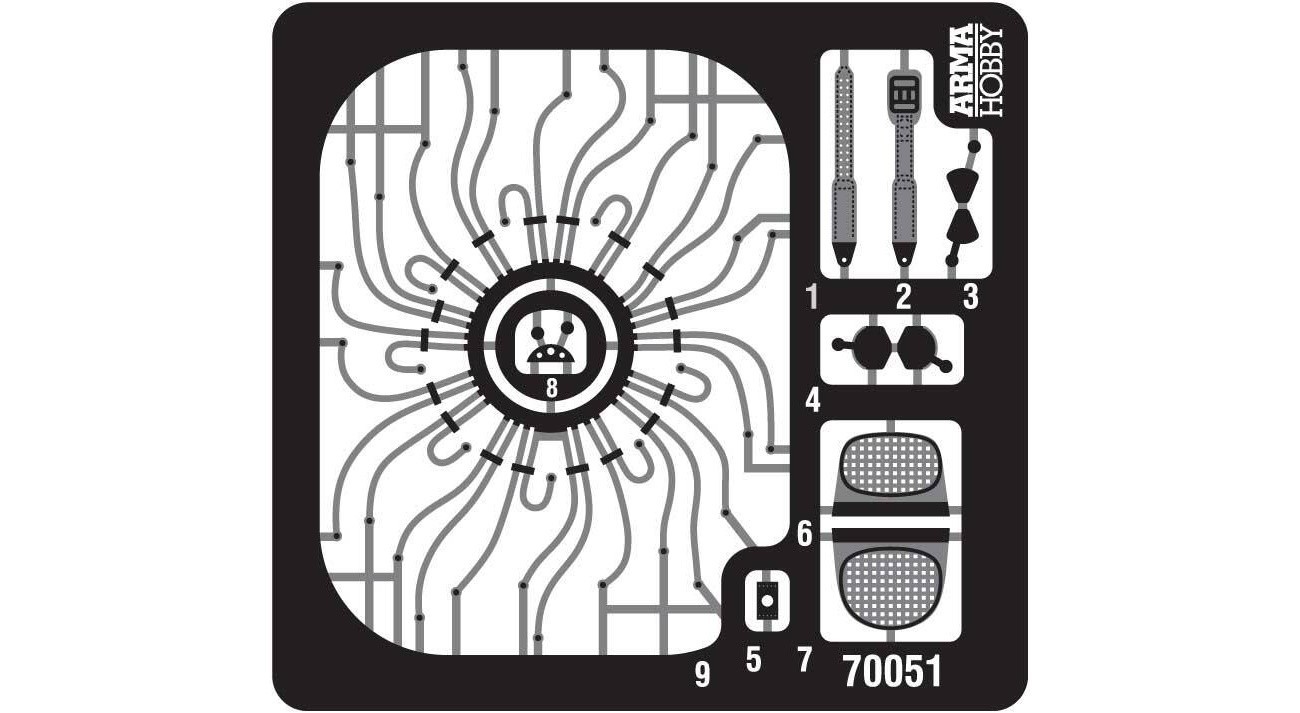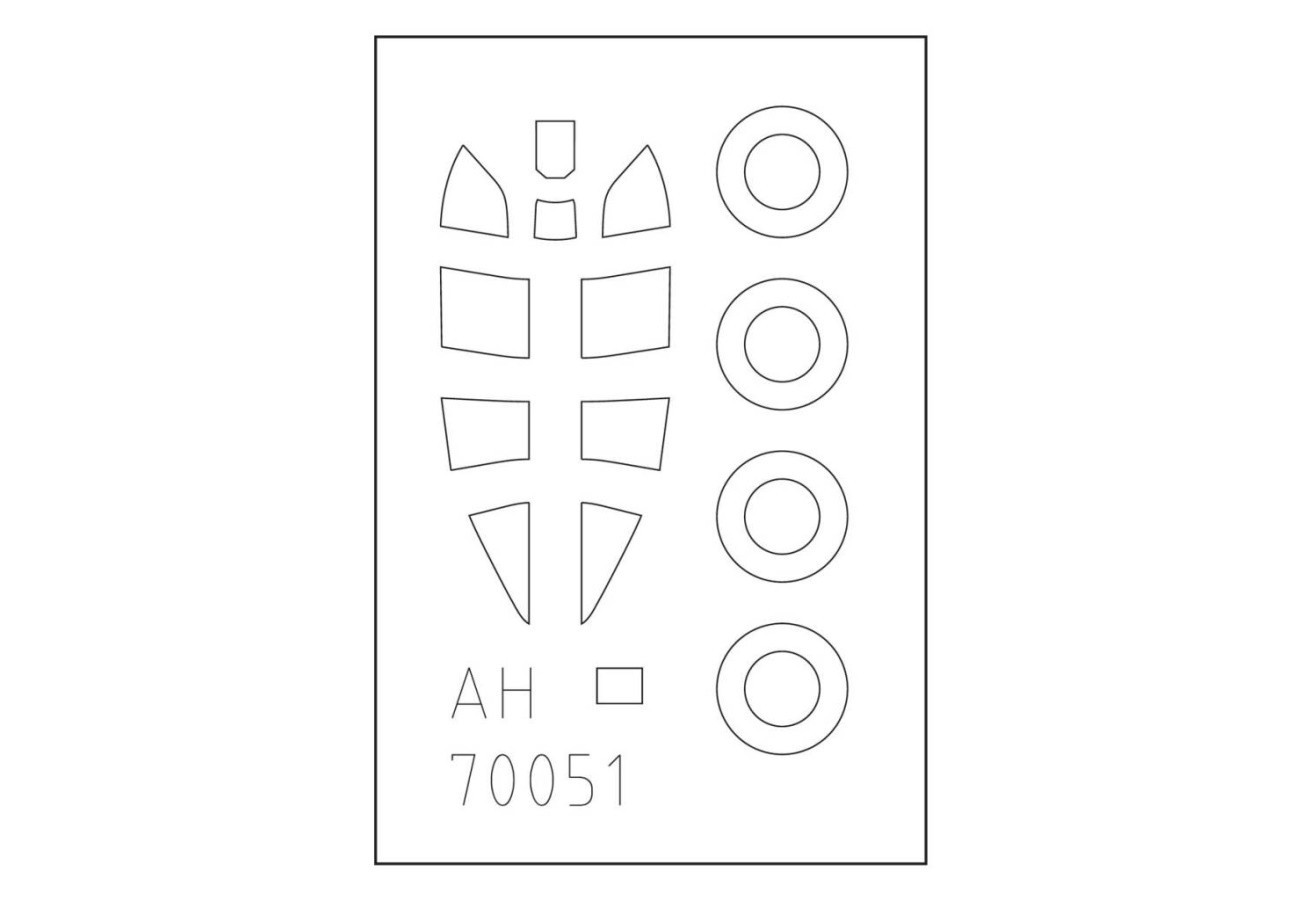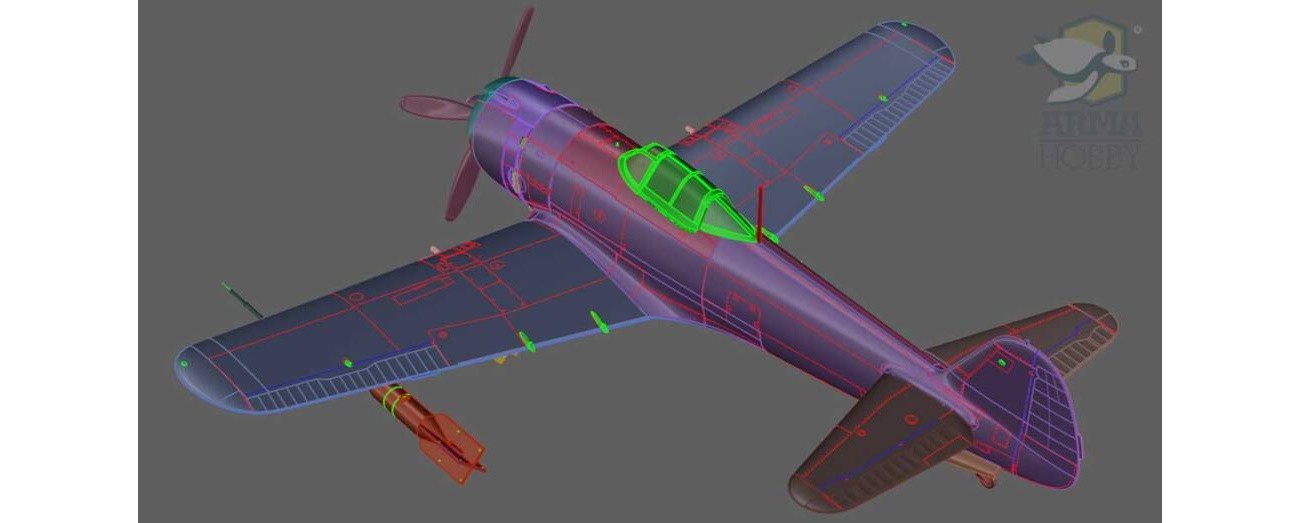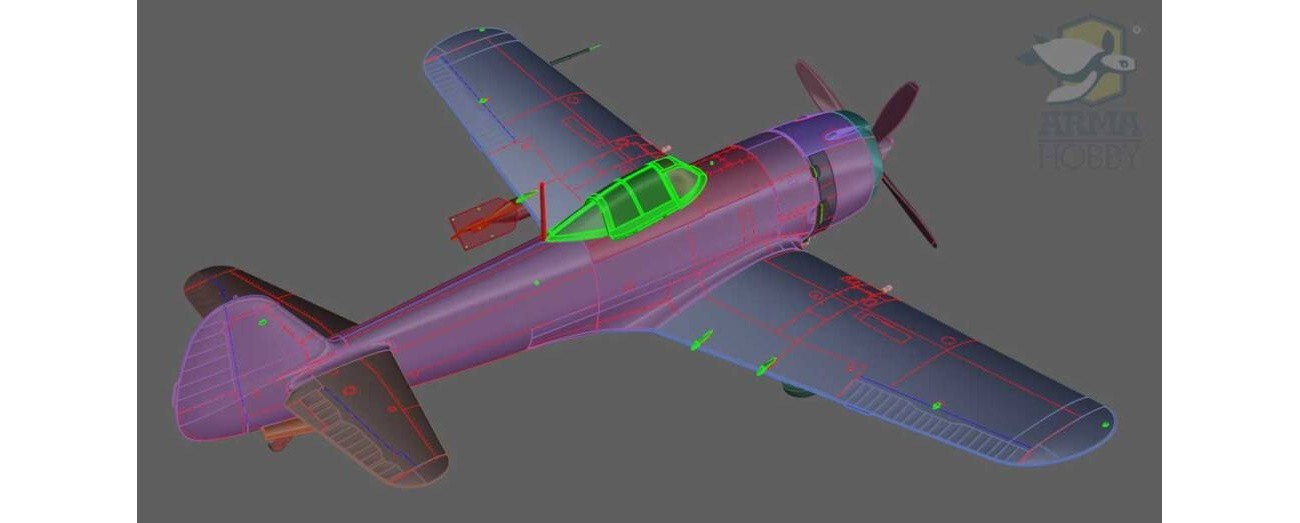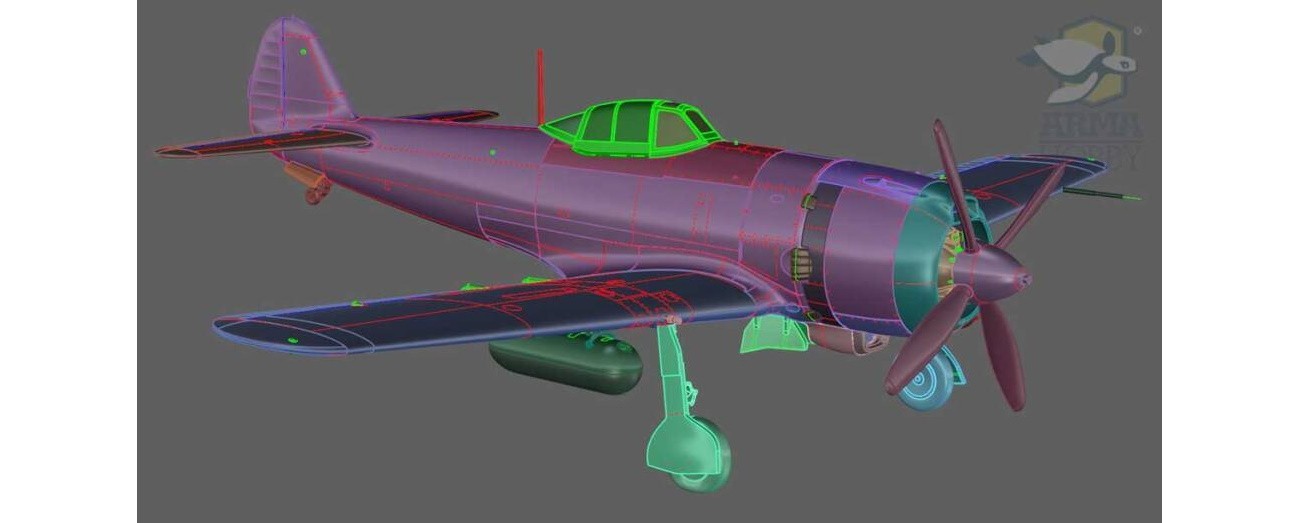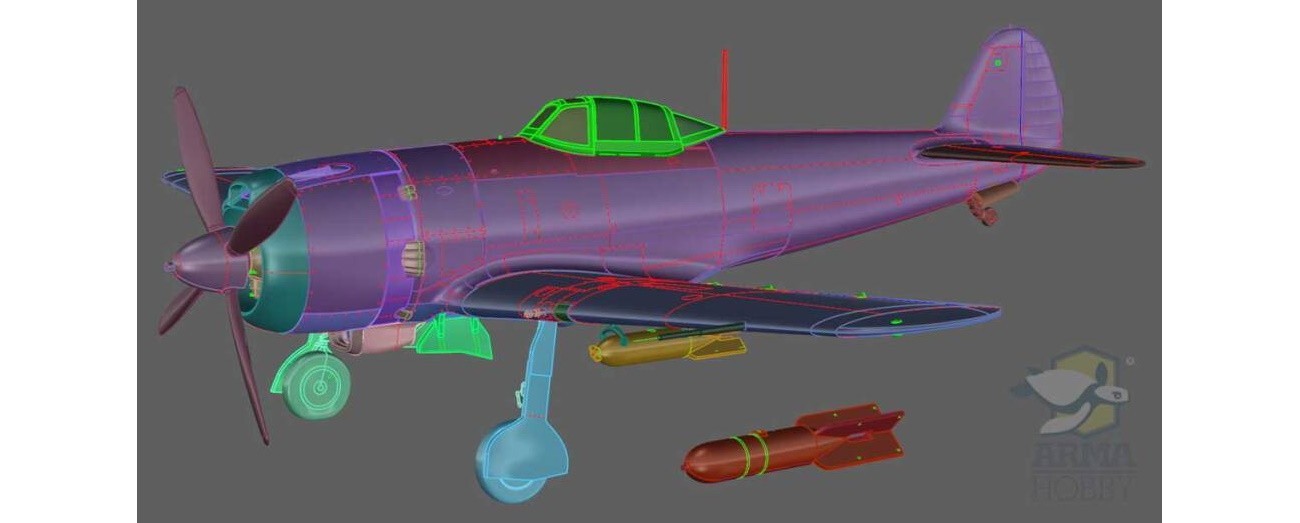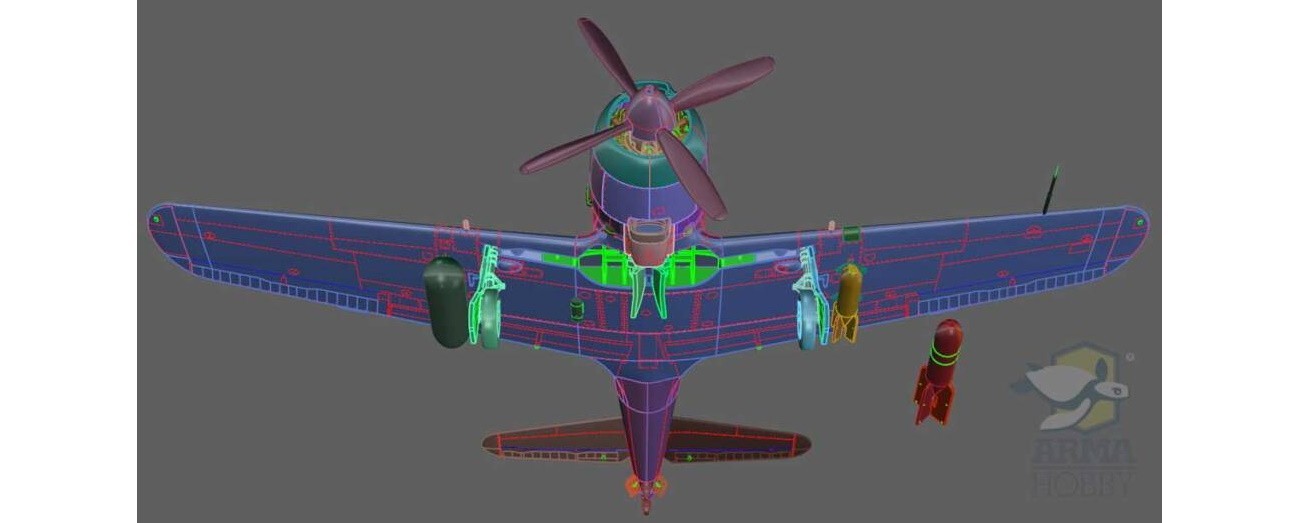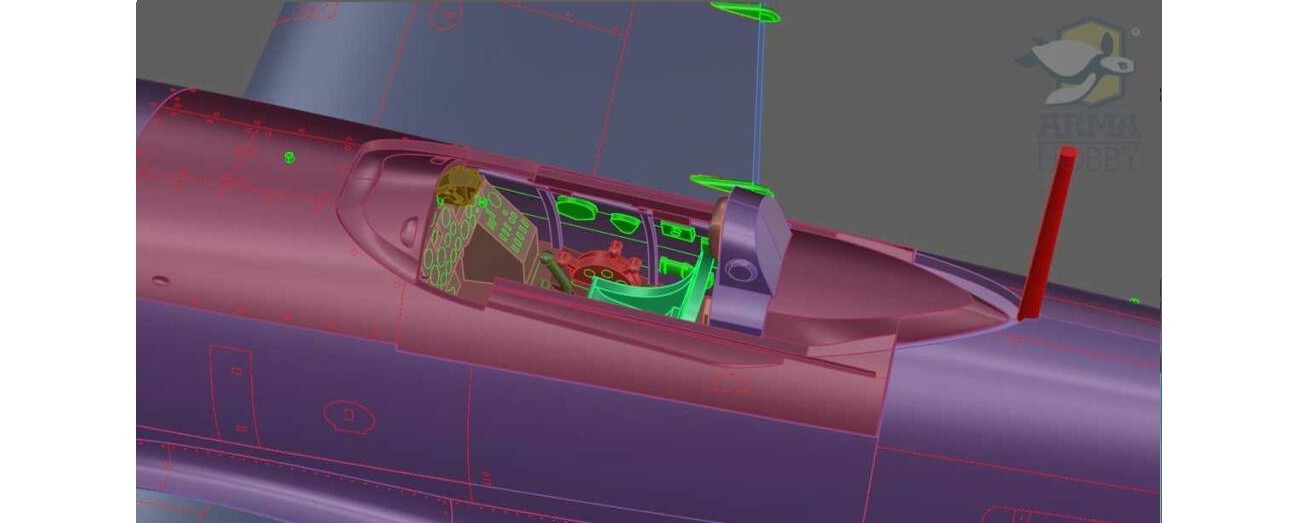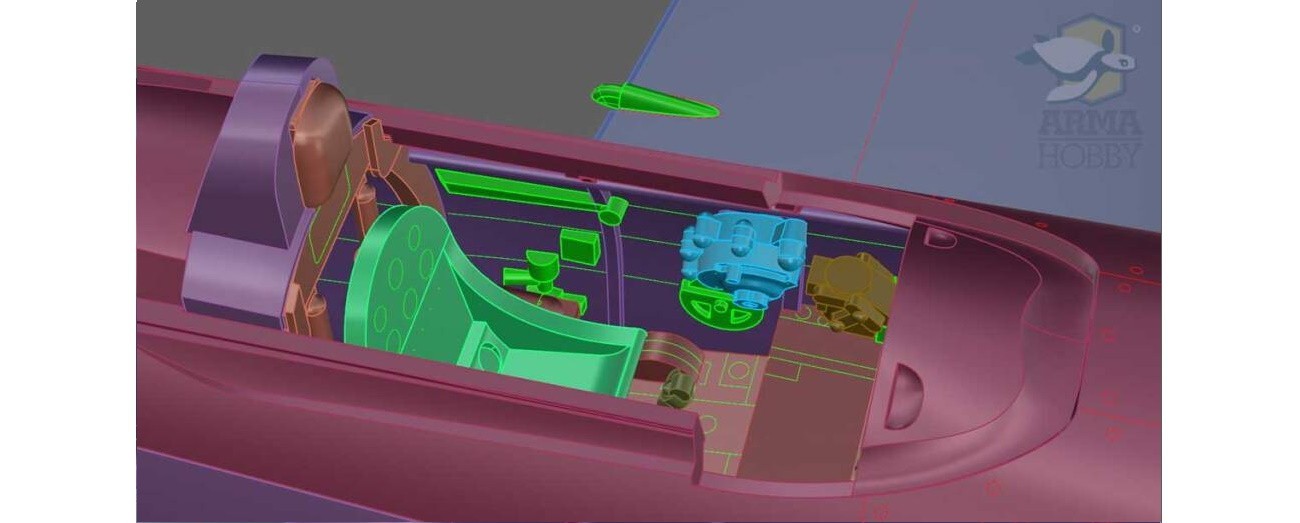
"Our newest model kit premiere – the Japanese Ki-84 Hayatefighter – is coming soon! Today we reveal the kit’s instruction. Examine itcarefully, it will allow you to find out how we designed this kit and learnabout the details of the painting schemes"………………….ARMA Hobby
Kit features parts needed to build 1/72 scale model of Nakajima Ki-84 Hayate in following versions: Ko or Otsu.
- plastic parts
- photo-etched parts
- decal with 6 marking options (Japan)
- masks for canopy and wheels
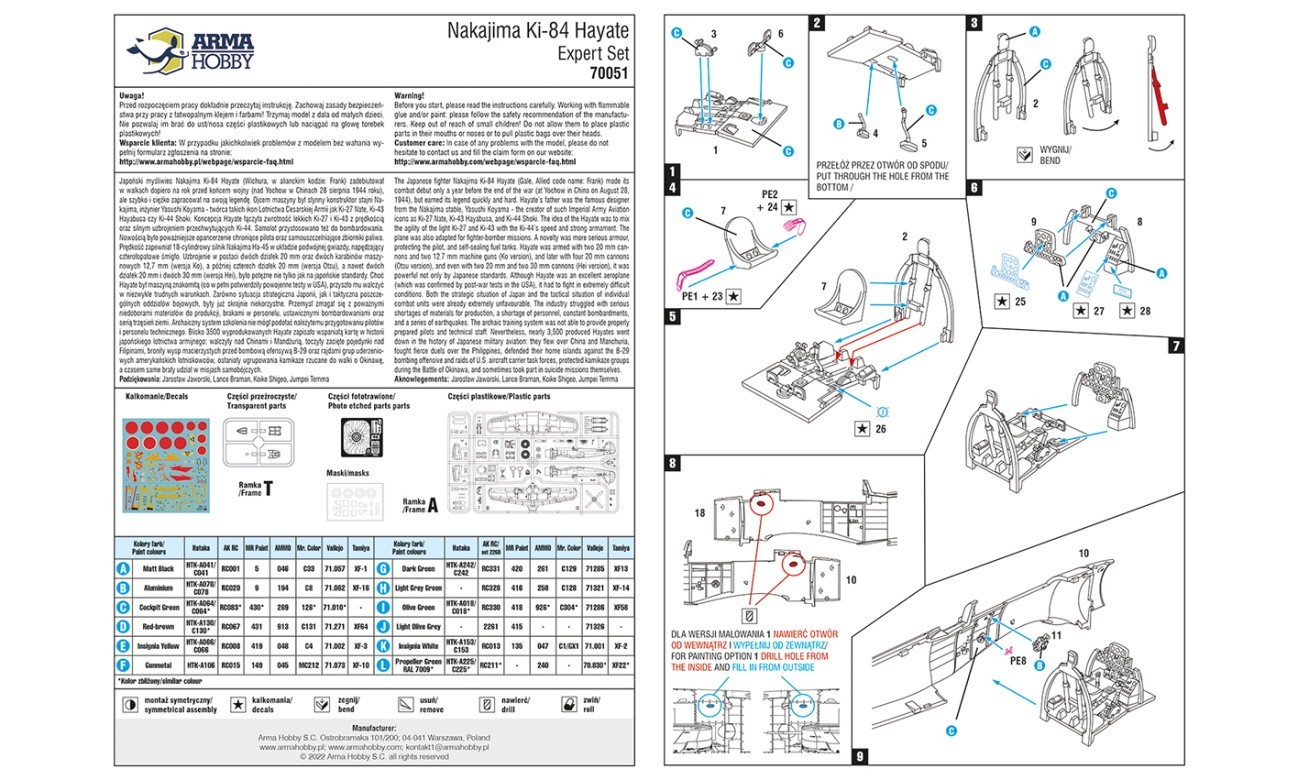

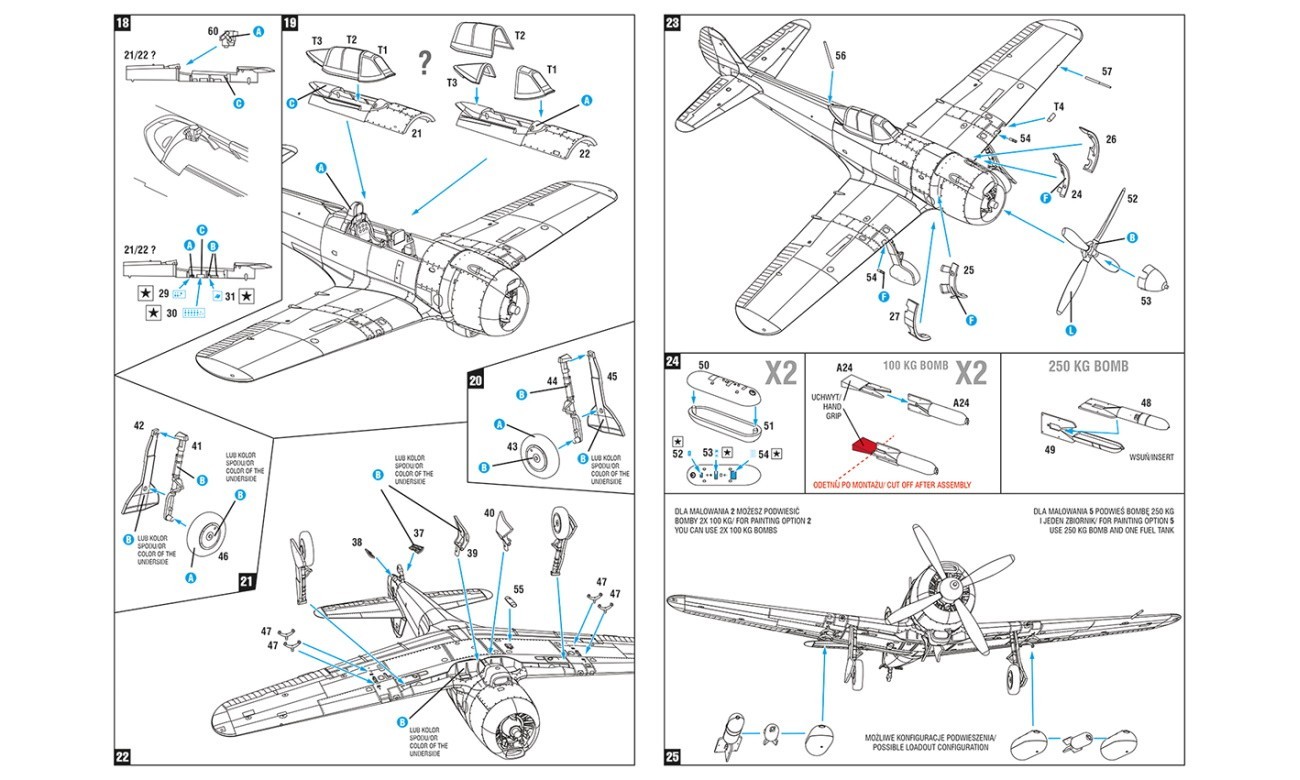
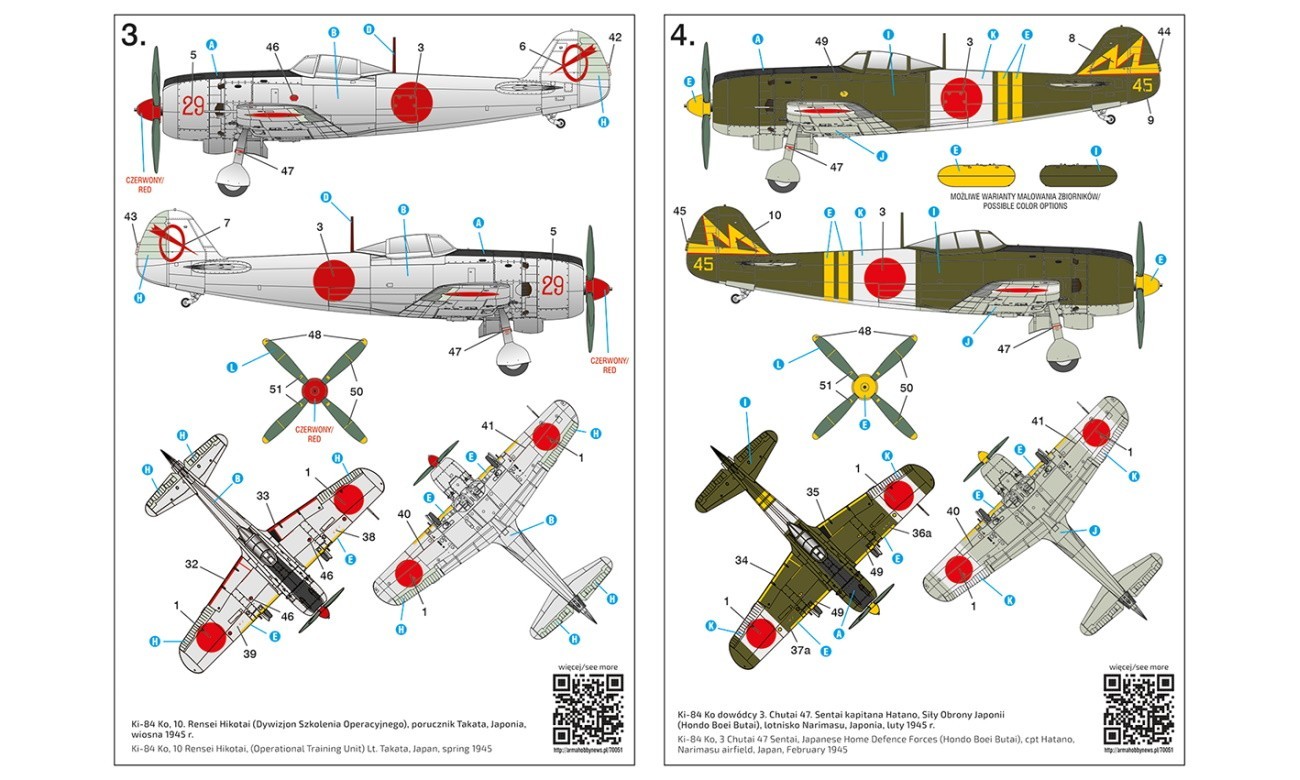
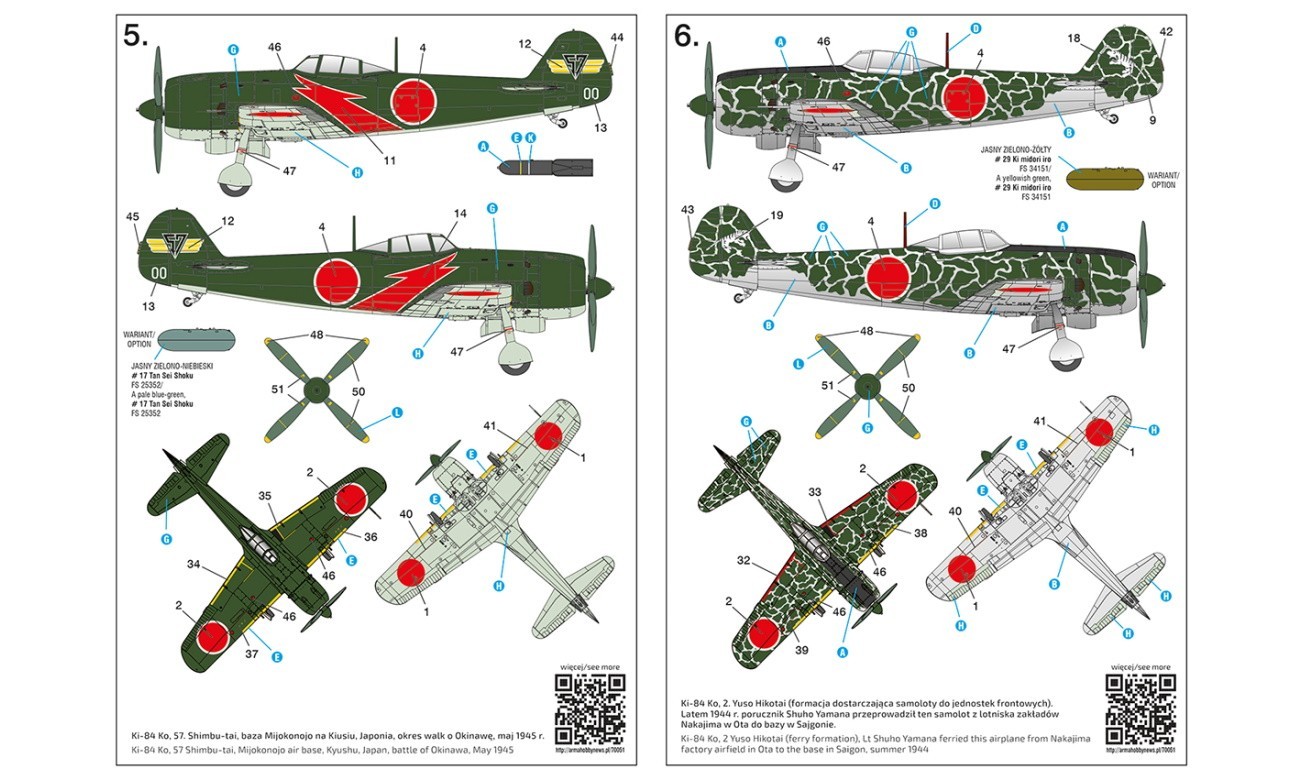

Marking options included in the kit:
- Ki-84 Otsu (armed with 4 cannons 20 mm), 104 Sentai, Ota airbase, Japan, August 1945
- Ki-84 Ko serial no. 1446, 2 Chutai 11 Sentai, Philippines, 1944/45
- Ki-84 Ko, 10 Rensei Hikotai (Operational Training Unit), Lt. Takata, Japan, spring 1945
- Ki-84 Ko, 3 Chutai 47 Sentai, Japanese Home Defence Forces (Hondo Boei Butai), Lt. Itsuro Narimasu, Japan, February 1944
- Ki-84 Ko, 57 Shimbu-tai, Mijokonojo airbase, Kiusiu, Japan, Battle of Okinawa, May 1945
- Ki-84 Ko, 2 Yuso Hikotai (ferry formation), Lt. Shuho Yamana ferried this airplane from Nakajima factory airfield in Ota to the base in Saigon, summer 1944
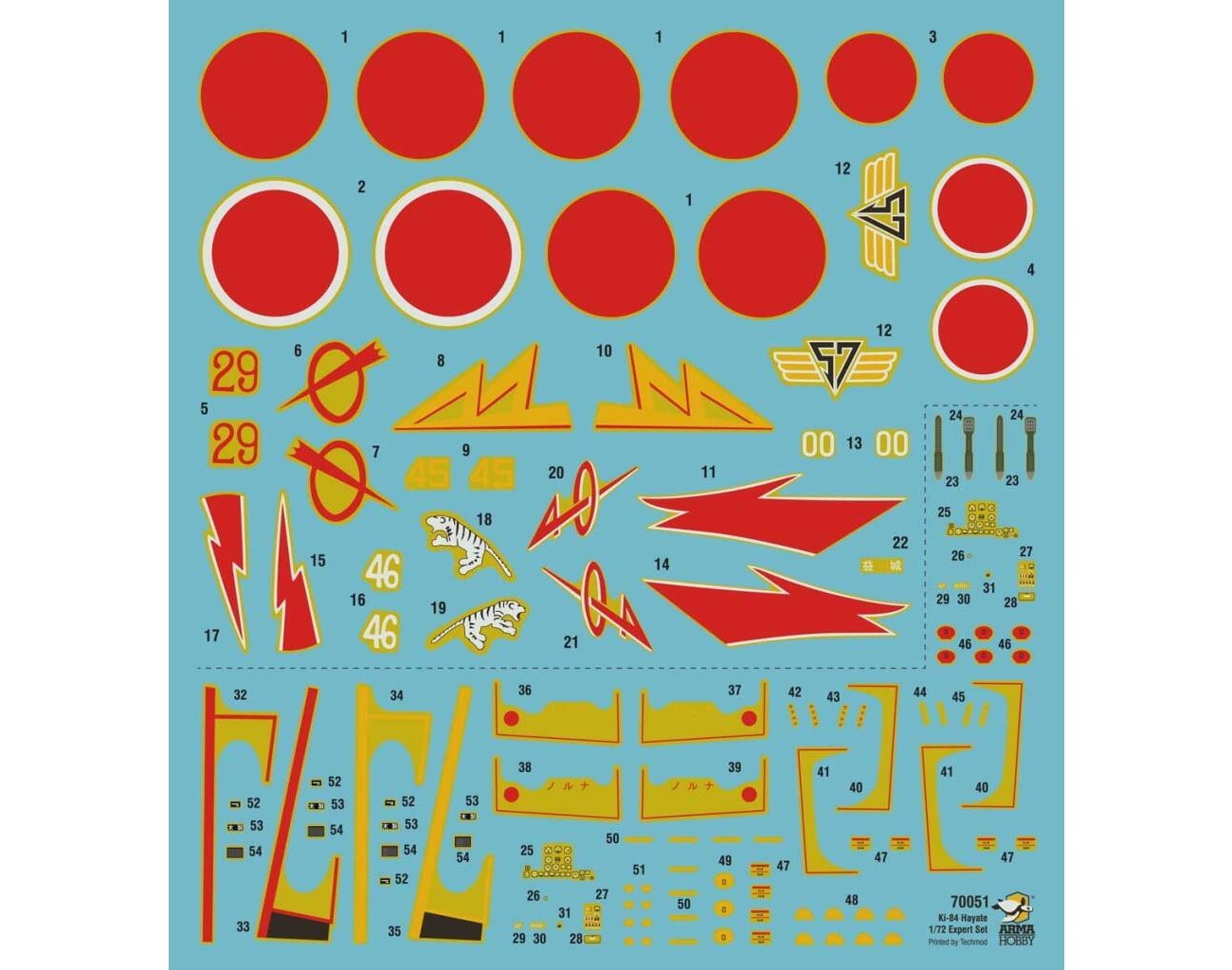
History of the Ki-84 Hayate
The Nakajima Ki-84 Hayate (Gale, Allied code name Frank) fighter invariably makes the hearts of model builders and fans of the Far East WWII front beat faster. It is hardly surprising since we are dealing with classic Asian beauty. Although the plane made its combat debut quite late (over Yochow in China on August 28, 1944), it earned its legend quickly and hard.
Hayate’s father was the famous designer from the Nakajima stable, Yasushi Koyama - the creator or co-creator of such icons of the Imperial Army Aviation as Ki-27 Nate, Ki-43 Hayabusa, and Ki-44 Shoki. The idea of the Hayate was to mix the features of its predecessors, combining all their advantages, while minimizing their shortcomings. Considering that the light, agile Ki-27 and Ki-43 were completely different than the fast and heavy interceptor Ki-44, this was not an easy task for the designer. He also had to deal with the requirement to adapt the aircraft to fighter-bomber missions. The result was an aeroplane that is as fast and resistant to damage as a Shoki and at the same time not much inferior to the Hayabusa in terms of maneuverability. A novelty was more serious armour protecting the pilot and self-sealing fuel tanks. Hayate was armed with two 20 mm cannons and two 12.7 mm machine guns (Ko version), and later with four 20 mm cannons (Otsu version), and even with two 20 mm and two 30 mm cannons (Hei version), it was powerful not only by Japanese standards.
Although Hayate was an excellent aeroplane (which was also fully confirmed by intensive post-war tests in the USA), it had to fight in extremely difficult conditions. Both the strategic situation of Japan and the tactical situation of individual combat units were already extremely unfavourable. The archaic training system could not provide the properly prepared pilots and technical staff. In addition, the industry struggled with serious shortages of materials for production, a shortage of personnel, constant bombardments, and a series of fatal earthquakes. Nevertheless, nearly 3,500 Hayates were produced, which went down in the history of Japanese military aviation: they flew over China and Manchuria, fought fierce duels over the Philippines, defended their home islands against the B-29 bombing offensive and raids of U.S. aircraft carrier task forces, protected kamikaze groups during the Battle of Okinawa, and sometimes took part in suicide missions themselves.
70051 - Nakajima Ki-84 Hayate Expert Set – 1:72
Please remember, when contacting retailers or manufacturers, to mention that you saw their products highlighted here – on AEROSCALE.
